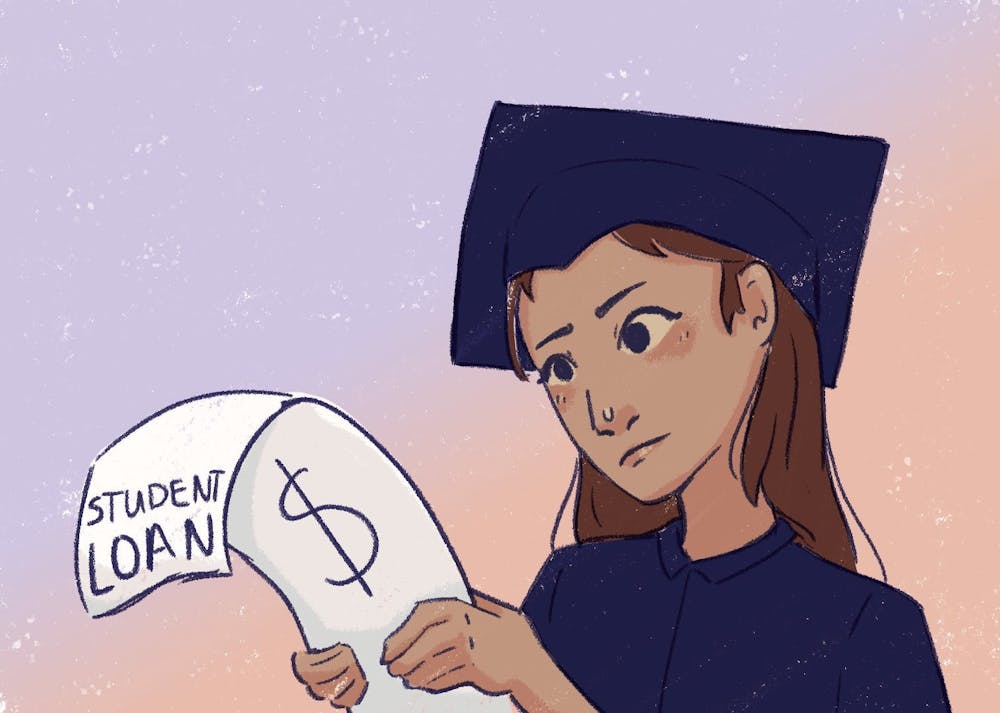President Joe Biden unveiled his administration's plan for student loan forgiveness Aug. 24, prompting a mixed reaction from current and former ASU students who have taken out loans to fund their education.
The Department of Education will provide up to $20,000 in relief for Pell Grant recipients and up to $10,000 for non-Pell Grant recipients who make less than $125,000 annually, or $250,000 for married couples.
While the announcement was met with praise and excitement from many student loan borrowers, some were frustrated they would not be eligible for relief. Brett Holzhauer, an ASU alumnus who graduated in 2015, said he felt the forgiveness was unfair for those who didn't qualify for federal student loans and had to turn to private loans to pay for school.
"I went ahead and tried to apply through FAFSA, and my parents 'made too much money,'" Holzhauer said. "So I was left to fend for myself in terms of funding my education."
Holzhauer said he took out $72,000 in private student loans for his undergraduate journalism degree, but has since paid down that balance to $5,350. He plans to be debt-free by the end of the year.
"It's just so ironic in my own personal situation that as of right now, I'm at $5,350 left in student loans," he said. "So if I had federal student loans, my student loans (would) be gone, but I don't, because I was locked out because of my parents' income, which had no direct correlation to my situation."
However, Holzhauer said it is "wise" to offer more forgiveness to Pell Grant recipients. According to Department of Education data, Arizona had 884,400 federal student loan borrowers as of March 2022, with the Education Data Initiative reporting an average of nearly 242,000 Pell Grant recipients each year receiving an average of $3,900.
For Breanna Wandrych, a graduate student studying social work, the student debt forgiveness is welcome. Wandrych received a full-ride scholarship for her undergraduate degree at ASU, but had to take out $30,000 in loans for graduate school.
"For myself, $10,000 is significant, that's about a third of my total amount, which, in effect, will offer me future freedom to make career decisions based off of my own goals rather than making employment decisions based off of one more payment," Wandrych said.
Additionally, Wandrych was excited to hear about the administration's plans to reduce interest rates on federal loans. The new plan will cap payments on undergraduate student loans at 5% of the borrower's income, preventing higher payments from high interest rates.
"It's hopefully a first step toward stopping the really high interest rates that have really been crushing people," Wandrych said. "Yes, the student loan is a beast in itself, but it's really those high interest rates that have been affecting people more than anything else."
Before aid, first-year resident undergraduate students at ASU pay about $12,700 per year in tuition and fees. Students receive an average of about $10,000 per year in gift aid, work-study and on-campus jobs, according to ASU data on admissions. ASU's Financial Aid and Scholarship Services office was unresponsive to a request for comment.
Tommy St Clair, a former ASU student who dropped out due to the high cost of education among other factors, said he had more of a mixed reaction to the debt forgiveness. St Clair has $3,000 in federal student loan debt that will now be forgiven, but his brother wasn't as lucky.
"I have a brother who is around six figures in student debt and we live together too, so I've been seeing the flip side of it, where he got some forgiven but he still has that six figures (left)," he said. "So it was very bittersweet because it felt like a fundamentally good thing, but it felt like more could have been done."
However, St Clair, who was studying graphic information technology, said knowing his student debt will be forgiven has given him an added incentive to return to school — now with a clean slate.
"It feels like I'm able to actually do a real run rather than a trial run like my freshman year was," St Clair said.
According to the deputy director of the National Economic Council, an application for debt forgiveness will be available in early October. Applicants are encouraged to apply by Nov. 15 to receive relief before the student loan repayment pause ends on Dec. 31.
In the meantime, borrowers can sign up for updates from the Department of Education on loan forgiveness through its subscriptions page.
Edited by Piper Hansen, Logan Stanley and Greta Forslund.
Reach the reporter at rpriest2@asu.edu and follow @reaganspriest on Twitter.
Like The State Press on Facebook and follow @statepress on Twitter.

Reagan Priest is a managing editor, overseeing and working with the six digital desks at The State Press. She previously worked as a social justice reporter for Cronkite News and as a digital production intern at The Arizona Republic.




